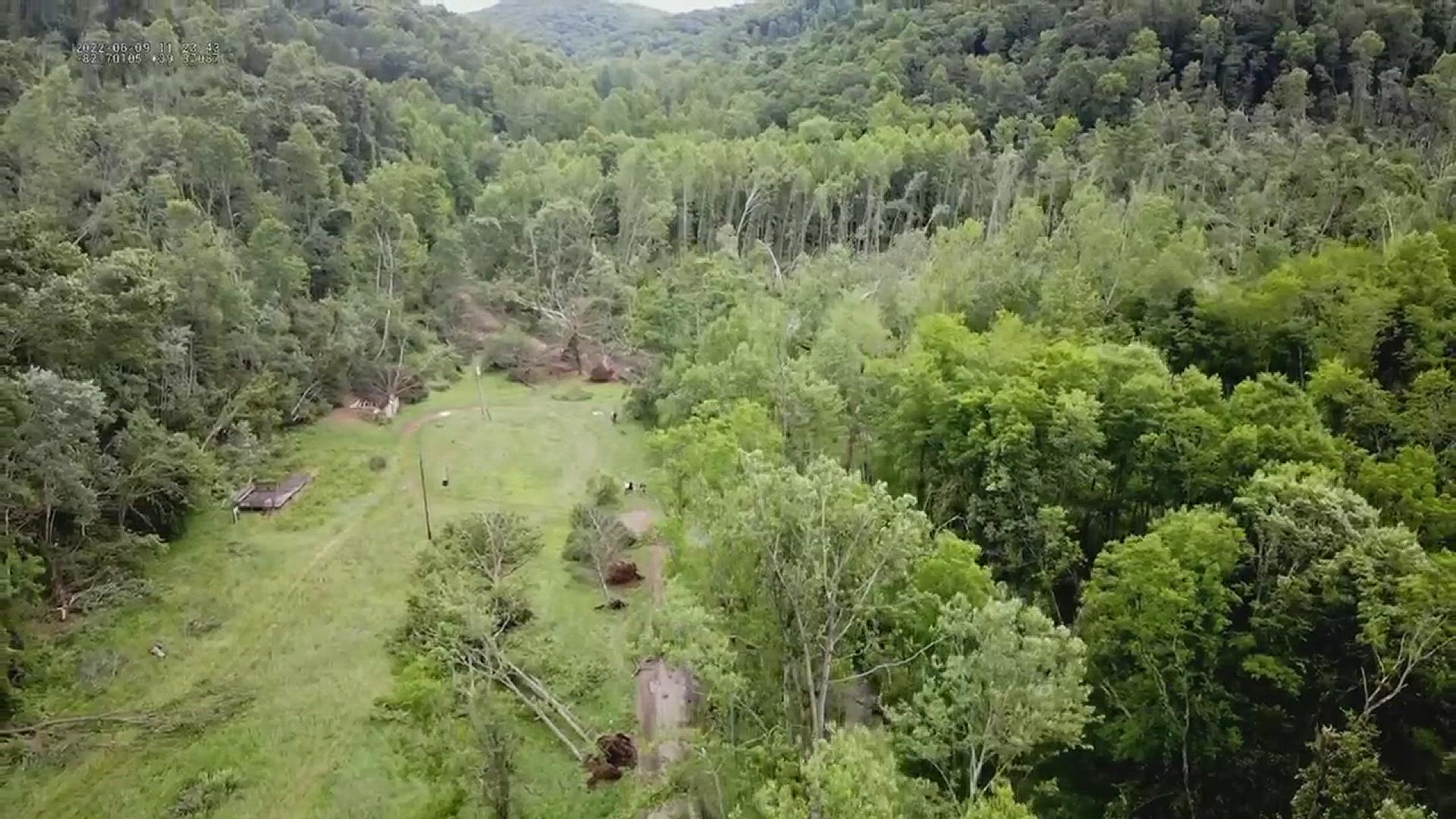COLUMBUS, Ohio — The National Weather Service says the tornado that touched down in Hocking County on Wednesday has been determined to be an EF2 and traveled for more than five miles into Vinton County.
Data showed the tornado started in the village of Adelphi and stayed on the ground from 7:16 p.m. to 7:25 p.m. Survey crews found the first damage from the tornado was near the entrance to Tar Hollow State Park along state Route 327.
Most of the damage was to trees that were uprooted because of the 120 mph winds from the tornado. No injuries were reported.
Five other tornadoes touched down in the western part of Ohio as strong storms rolled through the area. One of the tornadoes caused significant damage to a Meijer distribution center in Miami County.
A storm survey conducted by the NWS determined the tornado that damaged the facility and other parts around Interstate 75 near Tipp City reached at least an EF2 rating. The tornado touched down between 5:55 p.m. and 6:15 p.m. There were no reported injuries, according to a Miami County official.
Tornadoes were also confirmed in Clark, Darke, Champaign and Brown counties. The tornadoes in Darke and Clark were both rated EF1 after an initial storm survey on Thursday. EF1 tornadoes range from 86 to 110 mph.
The tornadoes in Champaign and Brown County were determined to be an EF0. Speeds of an EF0 tornado are between 65 and 85 mph.
Most of central Ohio was under either a Tornado Warning or a Severe Thunderstorm Warning during the early evening hours on Wednesday.
Officials in Athens County say debris and tree limbs were scattered throughout the area.
The strong storms knocked out power for thousands in the state. Current outages and estimated restoration times can be viewed on AEP Ohio's or South Central Power's outage maps.
Weather Resources: Watches & warnings | Radar | Hourly forecast
___
DOPPLER 10 SEVERE WEATHER SAFETY GUIDE
DIFFERENCES BETWEEN WATCHES & WARNINGS
Watch
A Watch indicates the possibility of severe weather in a relatively broad area. For instance, a tornado watch means conditions are favorable for the development of tornadoes. Go about your normal routines, but watch for threatening weather.
Warning
A Warning is issued when severe weather is actually occurring. For instance, a tornado warning means a tornado has actually been sighted or has been indicated by radar. The warning usually encompasses a relatively small geographic area. If a warning is issued for the area in which you live, take cover immediately!
TORNADOES AREN'T THE ONLY REASON TO STAY ALERT
Strong Winds
Strong winds of 55 mph or more can cause significant damage even though no tornado is present. "Downbursts" are columns of air that slam to the earth and spread high winds in many directions. Downbursts can be just as damaging as tornadoes; if such conditions are present, take the same precautions as you would for a tornado.
Lightning
Lightning claims more lives every year than tornadoes. When lightning is a threat, stay indoors and don't use electrical appliances. If you're caught outside, keep a safe distance from tall objects, and try to stay lower than anything nearby. A safe distance from a tree is twice its height.
TAKING COVER
Storms producing tornadoes in Ohio often approach from the southwest. They can travel at speeds up to 70 miles per hour and contain winds estimated at over 200 miles per hour.
Sometimes an approaching tornado will sound like the roar of a train or airplane. If you see or hear a tornado, take cover immediately. Seek shelter inside, preferably below ground level. Do not waste time opening windows; tornado-force winds will "open" the windows well before the pressure difference can cause any structural damage. Above all, protect your head and lie flat.
At Home
Get away from windows, doors and outside walls. Go to the basement. If you have no basement, go to a first floor bathroom, closet or room at the center of the house. If possible, get under heavy furniture and cover your head with blankets or pillows.
At School
Go to the lowest floor or basement. Go to small interior rooms or hallways. Stay away from windows and avoid auditoriums, gyms and other areas with wide, free-span roofs.
In Public Buildings
Go immediately to the designated shelter area or to an interior hallway or small room on the lowest level. Stay away from windows. Do not use elevators. Do not go to your car.
During tornado drills or actual tornado warnings, remember to DUCK
D – Go DOWN to the lowest level, stay away from windows
U – Get UNDER something (such as a basement staircase or heavy table or desk)
C – COVER your head
K – KEEP in shelter until the storm has passed
RELATED: What is a 'Gustnado'?

